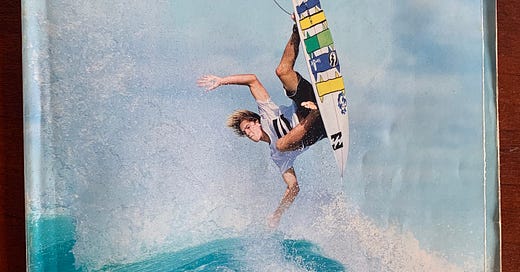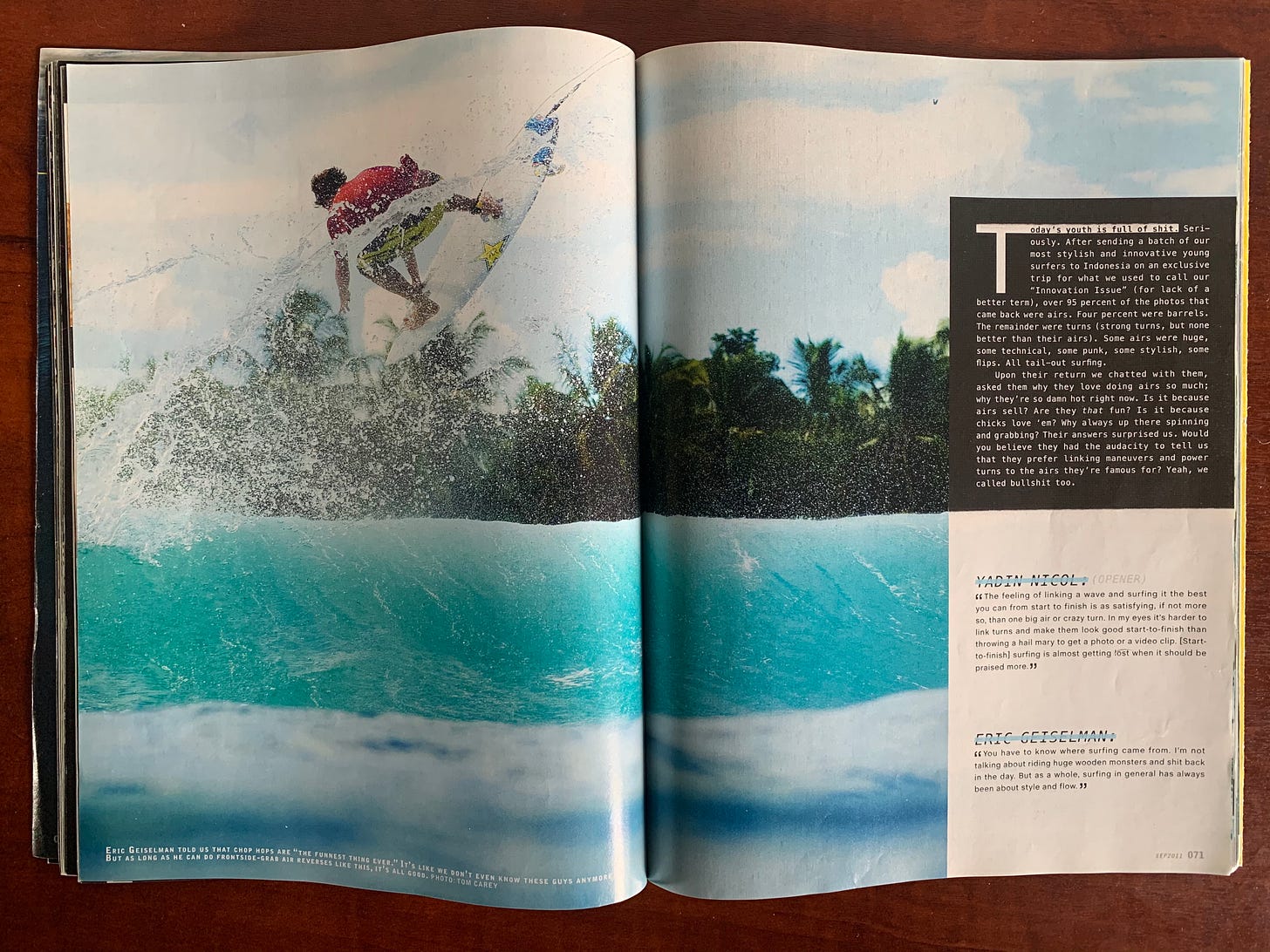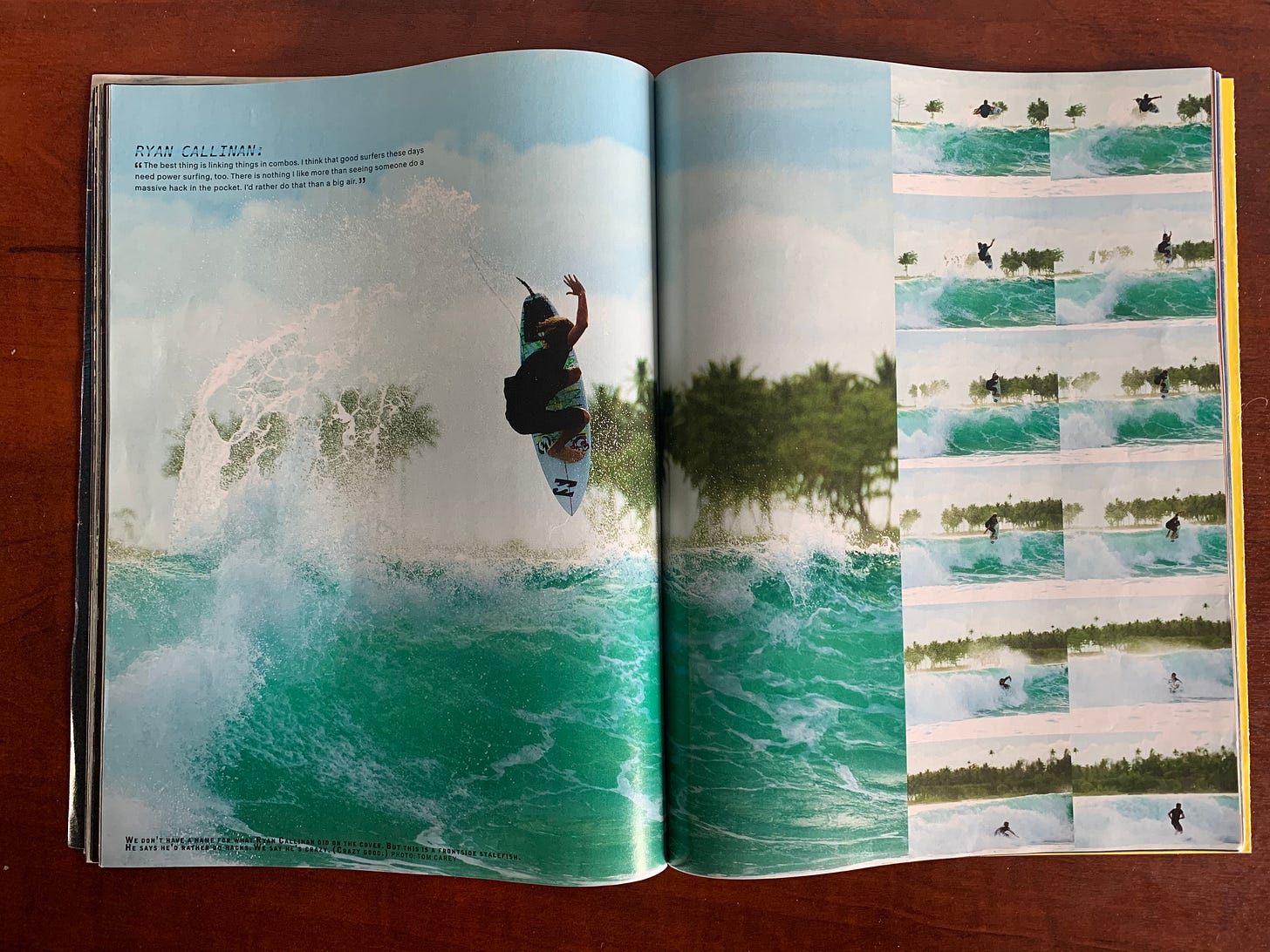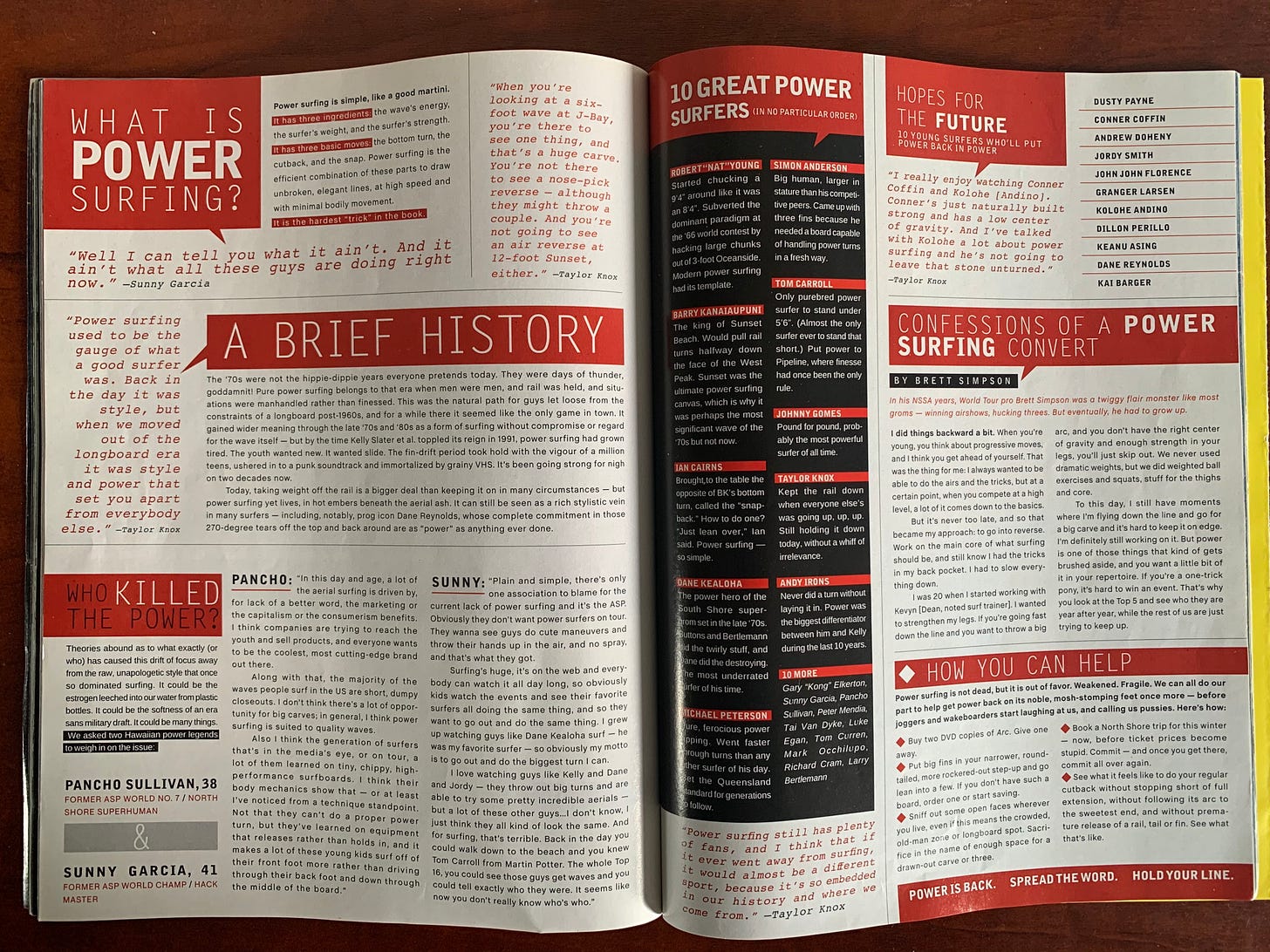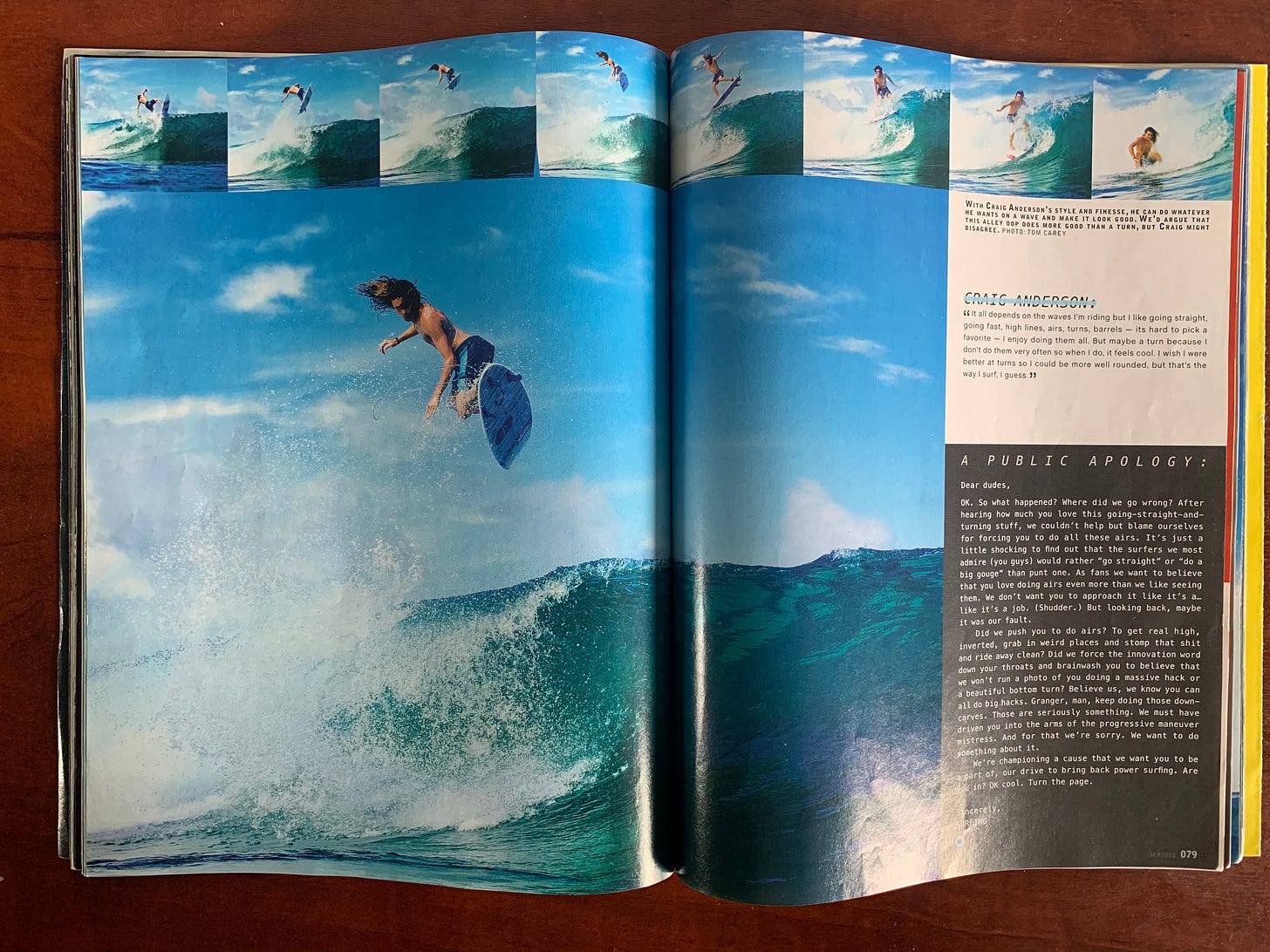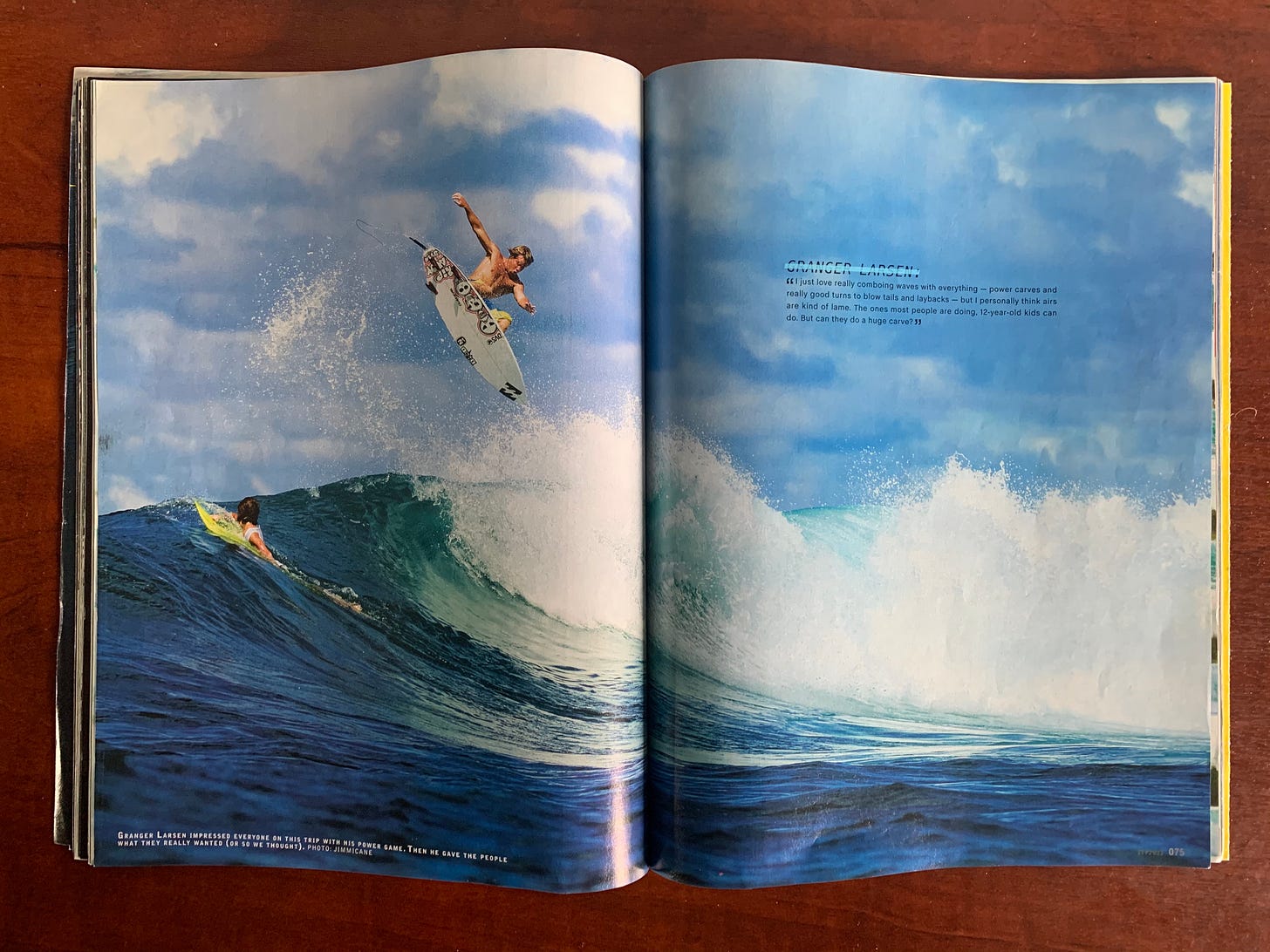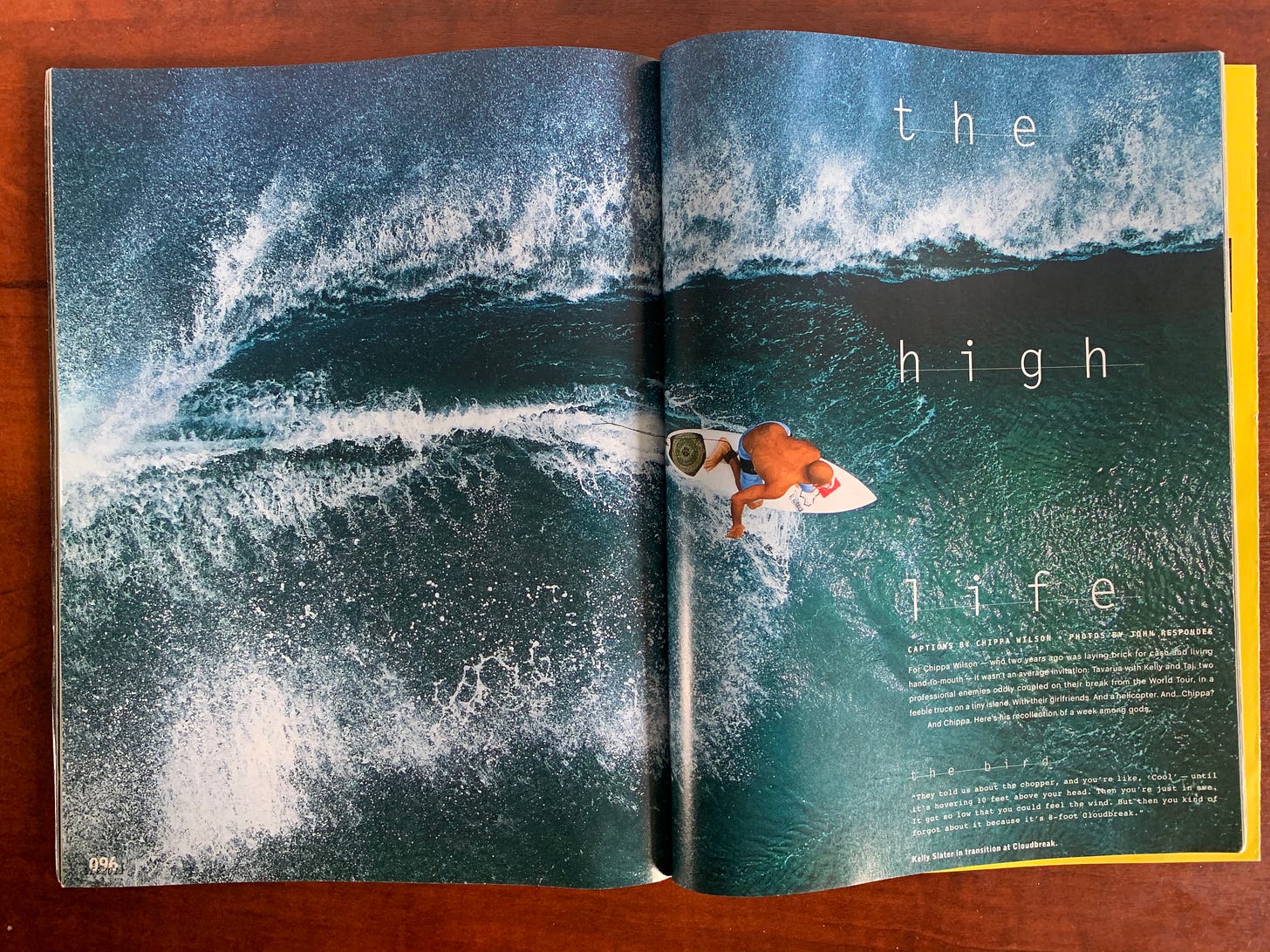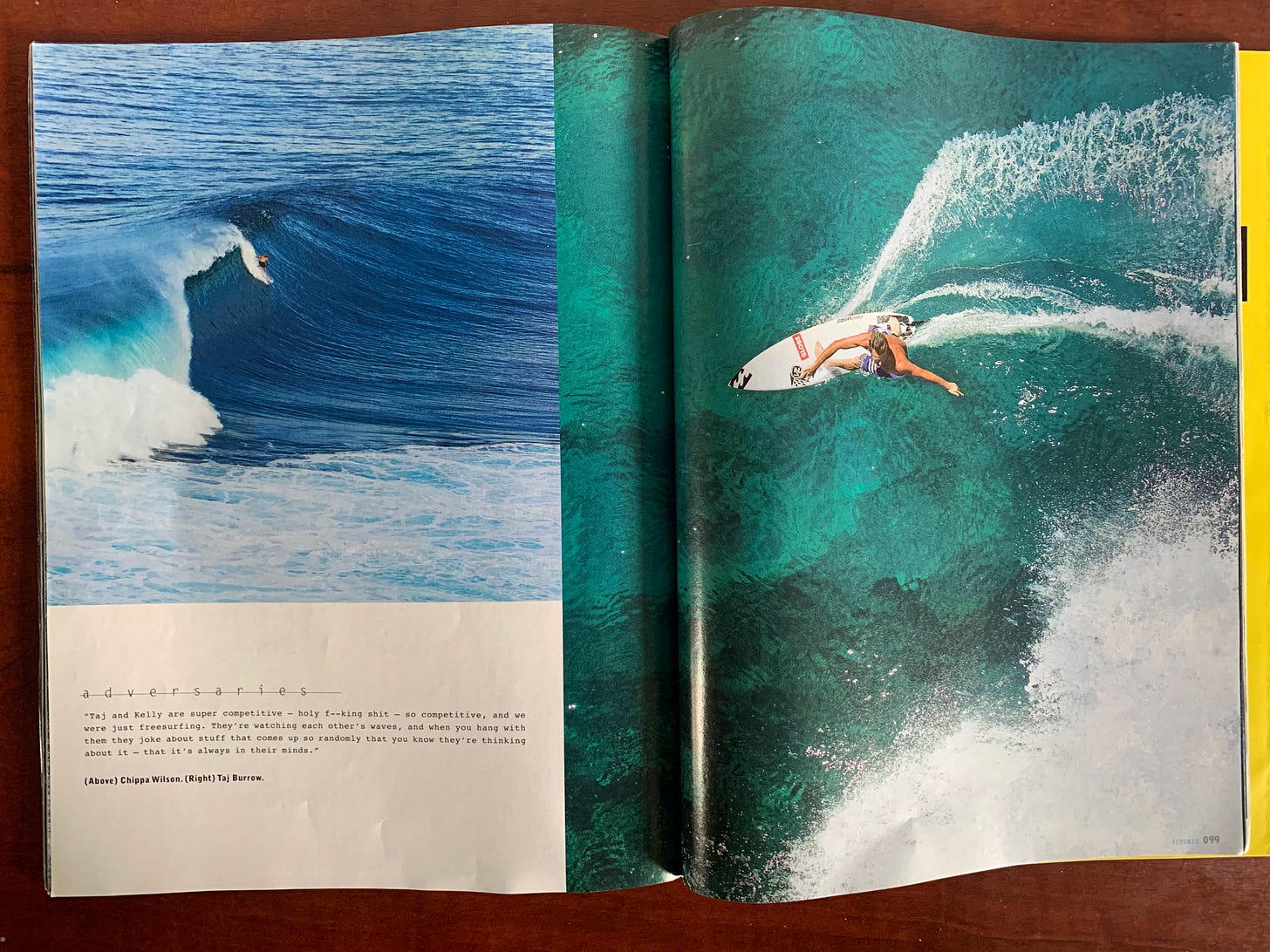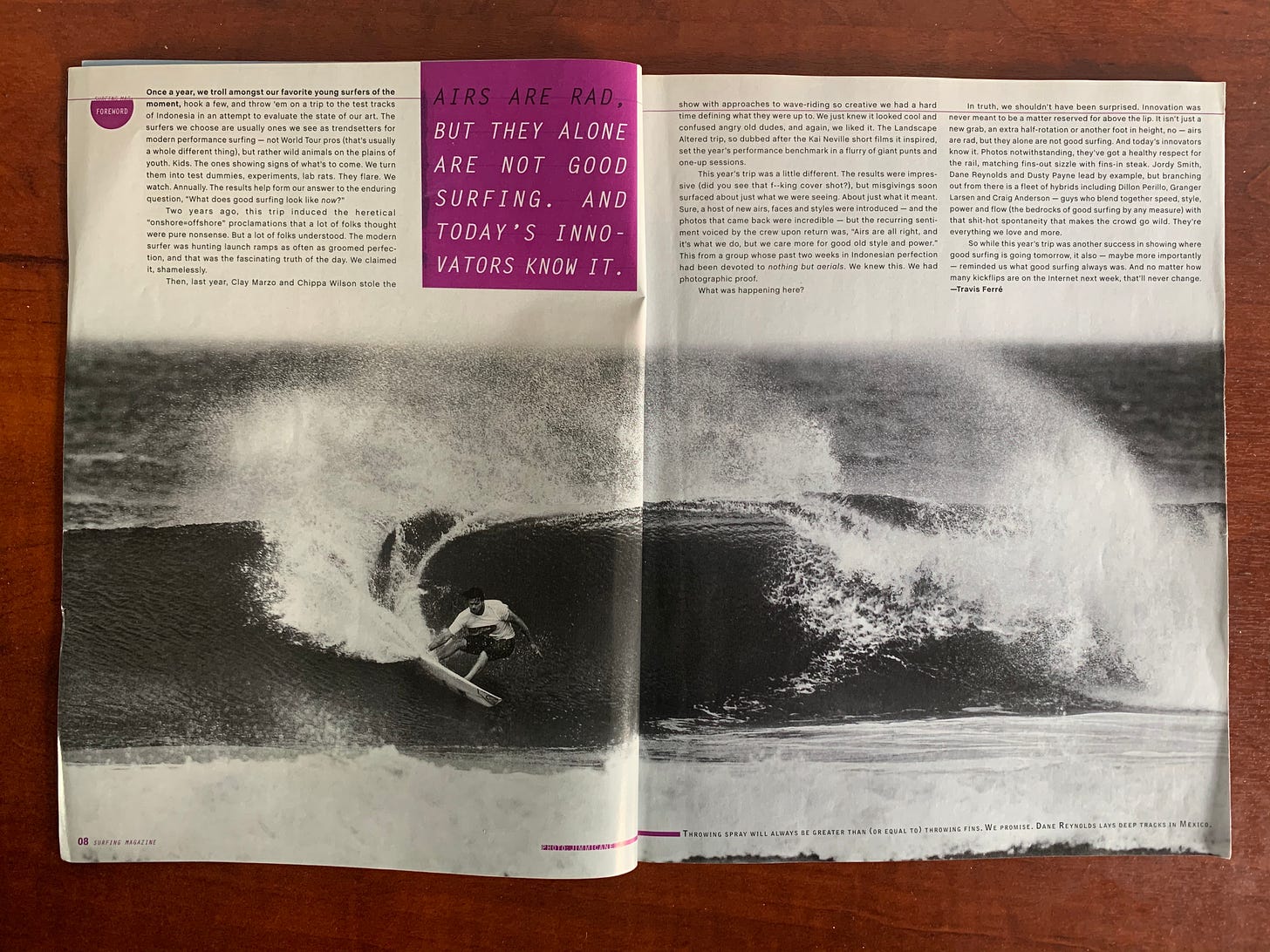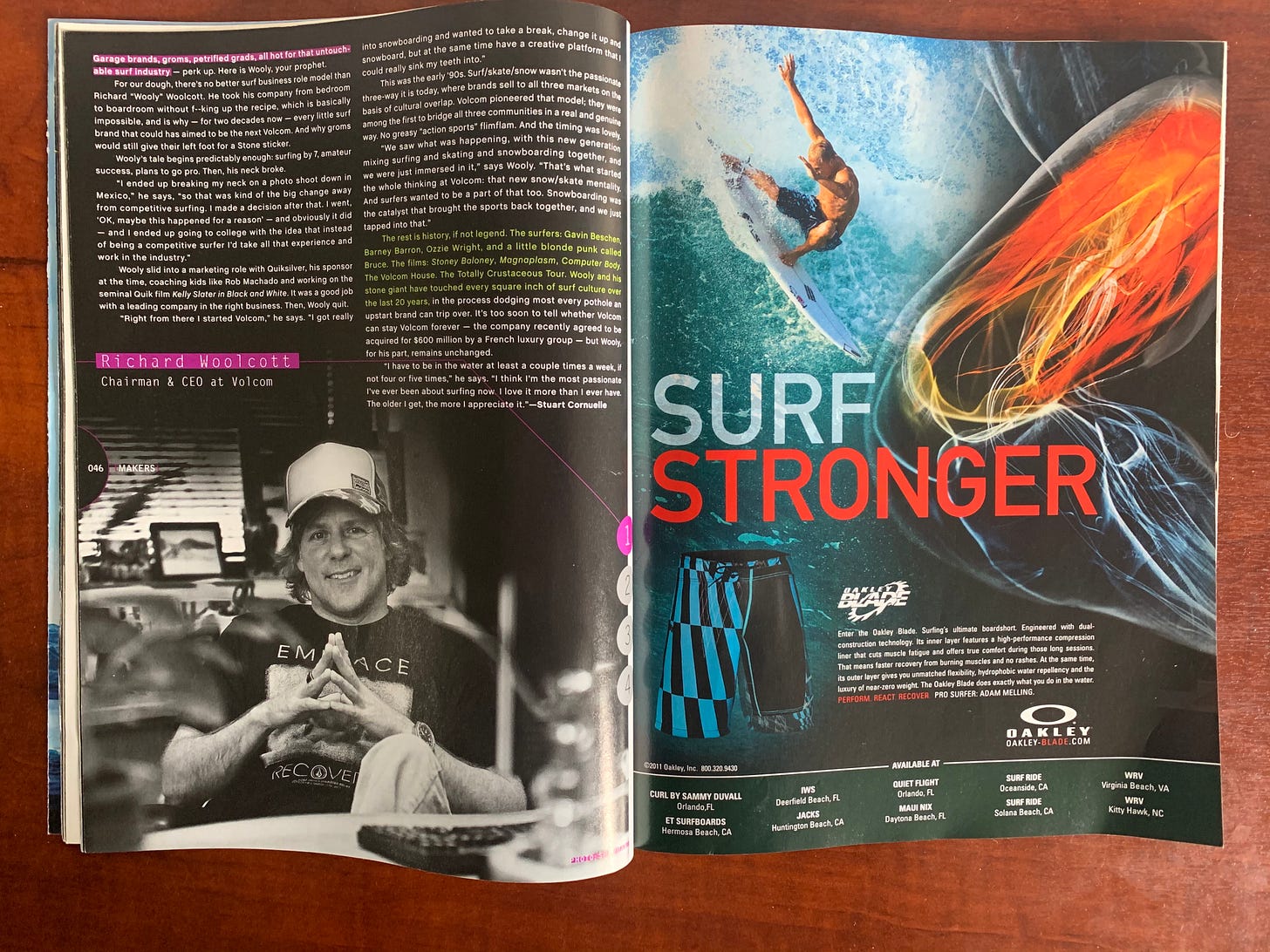Ryan Callinan’s gravity-defying air on this cover seemed to land him smack in the middle of the surf media’s radar. But more than a decade after he got this shot, he’s proved to be much more than an air guy, exemplified by his obliterating backhand on display on the WTC. Seriously, don’t miss his clips.
The crux of this edition of Surfing is a paradox. The writers pulled quotes from surfers about what they thought about airs. Based on the amount of coverage they were getting, airs seemed like all the rage. Yet every single person they polled, from Yadin Nicol to Eric Geiselman to Matt Meola to Granger Larsen to Ryan Callinan to Craig Anderson, all claimed the fundamentals of barrels and carves over their more vertical counterparts.
So why was that? Is it because airs sell? Do they make for good photos? Maybe at the time of the issue, a decade ago, airs were still being pushed to new heights in the freesurfing realm. Just look at Kai Nevill’s Modern Collective and Lost Atlas films. I would not be surprised if it’s 90 percent airs. And I’m not surprised that today’s edits seem to have toned it down and settled back into the face of the wave.
Hence the PSA that follows. It reads like an alarm bell, sirens blaring. I have never seen a spread in a surf magazine designed like this before or since. Kudos to the team on this one. It gives advice, history and context about “power” surfing, how to do it and how to appreciate it. A heavy and much-appreciated dose of Pancho Sulivan and Sunny Garcia here.
I felt like this feature was half commentary and half advocacy. It’s one of those interesting things about Surfing, it made observations about the state of surfing, but unlike its contemporary mags, wasn’t afraid of making noise and making changes to the sport’s landscape.
Trends, even surf trends are cyclical. Sure, airs look nice and they go well with ads and cover shots, but for the day-to-day surfers, there are much more relatable aspects of surfing that reside on the face of the wave, or below the lip. Oddly enough, Taylor Knox and Dane Reynolds, both used as another prime example here, and would both say the term power surfing is outdated a few years later.
The best surfers tend to be the most well-rounded. Just a few pages after this is a super-session with Kelly Slater, Taj Burrow and, you guessed it, Chippa Wilson, who for some reason got roped into surfing solid 8-foot-plus Cloudbreak with two of the tour’s best. Slater and Burrow are easily good enough to hang with the best of them above the lip, but it’s their versatility that makes them great.
Quotable:
Surfing: What is power surfing?
“Well I can tell you what it ain’t. And it ain’t what all these guys are doing right now.” — Sunny Gracia
Notable:
More than most magazines I’ve flipped through, few mark the passage of time like this one. Take, for example, the timeline of 18-year-old Carissa Moore. Already a phenomenon. Already historically great. She’d win the World Title later that year after making every final that season. Now, she’s surfing’s first Olympic gold medalist and has her face on a Honolulu skyrise next to Duke. No, I’m not joking about the latter. Then there’s a 20-year-old Albee Layer. He’s so fresh-faced. So many barrels at Jaws ahead of him. When I first read this as an eighth-grader in 2011, Layer was a new name for me.
“Makers”
Here we have brief snippets of some of the men behind the scenes at some notable surfing brands. I enjoyed this because it’s not the kind of thing you’d typically see in a surf mag. Business stories can easily feel stuffy, but companies like Stab are starting to change that. In this section, fans may recognize Pat O’Connell, the co-star of The Endless Summer II, who at the time was the surf marketing manager for Hurley. But my favorite synopsis here is that of Richard Woolcott, chairman and CEO at Volcom.
The company burned bright and hot for two decades, and even at the time of the article in 2011, the brand was up for grabs and sold for a reported $600 million. Though the brand sold to Authentic Brands Group, the conglomerate that owns Forever 21, Barney’s and Spyder, in 2019, for 20 years Volcom was the inimitable force dominating all-things surf, skate and snow. It capitalized on the youth and sought to emulate a brash and cavalier attitude, all captured in its iconic stone logo. The man behind it all was Woolcott, a former Quiksilver marketer who broke off to form Volcom in the 1990s. It helped that he immediately reeled in iconoclasts like Gavin Beschen, Barney Barron, Ozzie Wright and Bruce Irons. That, and the reputation of the Pipeline house, didn’t hurt.
